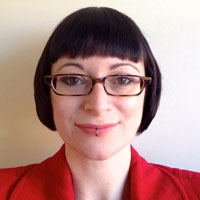News Archive
30.09.2013
Katherine Storrs will visit our lab from December 16th to 18th, 2013
On Monday, December 16th, 2013, 11am, Wichmann-lab, Sand 6 she will present the talk: What can aftereffects tell us about high-level vision?
Abstract:
Adaptation aftereffects have improved our understanding of how simple properties like colour, orientation, and motion are encoded neurally. Aftereffects induced by faces and objects may likewise help us understand how complex visual properties are encoded. For example, after seeing a male face for some time, people are more likely to categorise an androgynous face as being female. This has been attributed to the adaptation of cells selective for facial attributes underlying gender judgements. Based primarily on data from binary classifications of faces before and after adaptation, a consensus has formed that faces are encoded by many pairs of norm-based opponent channels centred on the average face. Results from more nuanced behavioural tasks shed some doubt on this conclusion though. When we used three-category rather than two-category classification tasks, two different face aftereffects both produced (different) asymmetrical patterns of category boundary shifts, more consistent with the predictions of multichannel than opponent models [Storrs, K.R., & Arnold, D.H., 2012. Not all face aftereffects are equal. Vision Research, 64]. Furthermore, it is difficult to confidently attribute classification changes to altered perceptual encoding, rather than criterion shifts. So far, the broad spatial spread of face aftereffects has discouraged researchers from using more objective tests, such as a two-alternative forced-choice (2AFC) task to compare appearance simultaneously in an adapted to an unadapted location. However, spatially contingent face aftereffects can be induced if two different adapting faces are placed in two separate locations. I will show that adaptation within simple opponent and multichannel models predicts different patterns of aftereffects in a 2AFC double-adaptor task, and I will present psychophysical data from this task applied to shape and face aftereffects.

